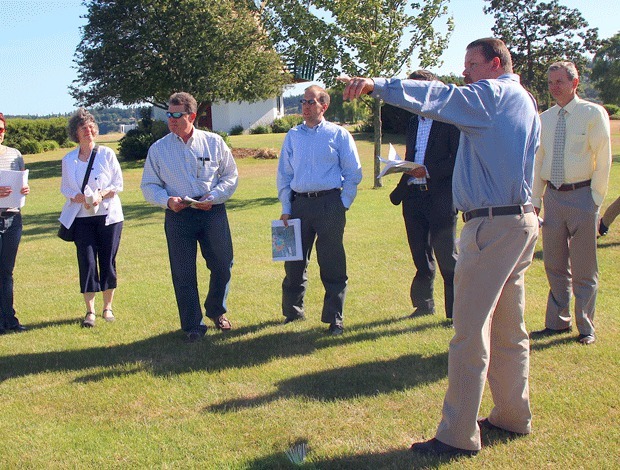A combination of loans and grants from the state and federal government for the new sewage treatment plants will save Oak Harbor taxpayers $28 million over 30 years, according to the city finance director.
In addition, the city staff plans to apply for additional grants and loans in future funding cycles, which could further defray costs.
Oak Harbor won big in the state budget that lawmakers finally passed in their second special legislative session, just in time to avoid a government shutdown July 1.
“We’re really happy to get the funding source,” he said. “It will help keep rates down.”
Oak Harbor Finance Director Doug Merriman said city officials are relieved that the budget finally passed. The city wouldn’t have gotten state funding for costs related to the project incurred during a shutdown.
The city applied for a loan from the Clean Water State Revolving Fund, which provides low-cost financing for water quality infrastructure projects.
He looked through the state budget after it passed and found that Oak Harbor received a $15.8-million loan at 1.9 percent. Merriman said the city got an especially low rate because of its economic state.
The city also received $5 million from the Centennial Grant program, which provides grants for wastewater treatment construction projects in “financially distressed communities,” according to the state Department of Ecology.
State Sen. Barbara Bailey, of Oak Harbor, also helped the city obtain a $2.5-million grant through a capital grant program administered through the governor’s office, Merriman said.
In total, that’s $7.5 million in grants and $16 million in low-interest loans.
Last year, the city received two loans totaling $11.4 million from the State Revolving Fund at a rate of 2.7 percent.
Merriman calculated how much the city will save because of the low-interest loans and grants and came up with $28 million over 30 years.
In its most recent estimate, Carollo Engineering, the firm designing the plant, projected that construction will cost $98.1 million.
City officials hope to get a better estimate when Carollo gets to the 60-percent design phase this fall.
City Council members have yet to decide whether to include a training facility or thermal dryers that would allow the treated material to be spread on fields locally. Both affect the final cost.
Members of the council and public toured the future site of the sewage treatment plant last month. It spans the parking lot behind the city-owned Whidbey Island bank building on Pioneer Way and protrudes into Windjammer Park, overlapping the current sewage treatment plants.
City Engineer Joe Stowell explained how the membrane bioreactor treatment system works and where the various buildings involved in the process — from the headworks to the solids building — will be located.
“The design team has gone to extreme efforts to minimize the the footprint,” he said.
Brian Matson of Carollo said the intent to incorporate “state of the art” technology to deal with the odor.
Stowell even passed out a sample — a clean one — of the membrane material.
“Sewage treatment is kind of a funny mix between mechanical and biological processes,” he said.



